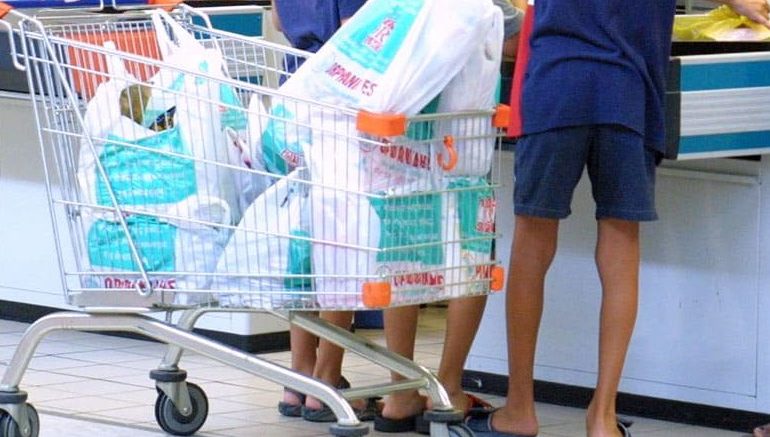Paying for plastic bags might pose the hardship for lower-income groups, should we continue this or not?
I refer to the article “Supermarts in talks to charge for plastic bags” (Sunday Times, Sep 24).
It states that “If an industrywide agreement is reached, shoppers can expect to start paying for plastic bags by the middle of next year. The price of each plastic bag could be between five cents and 10 cents.
The supermarkets would not be drawn to comment specifically about the voluntary agreement. But Prime, Sheng Siong and Dairy Farm Group emphasised the need for all retailers to adopt a plastic bag charge for there to be an impact.
FairPrice director for corporate communications and brand Jonas Kor noted that a surcharge could pose the hardship for lower-income groups. “We, however, continue to assess the feasibility of plastic bag reduction measures and remain open to any new initiatives and potential partnerships, such as the BYO (Bring Your Own) Singapore campaign, to encourage this positive industry trend,” he said.
Consumers said they would prefer not to be charged for plastic bags, though a levy would spur them to look for alternatives. Dental assistant Lai Xian Ying, 32, does not mind paying a small fee. “We need to do our part to save the Earth,” she said.
I would like to suggest that instead of just charging for plastic bags – an incentive may also be offered to consumers – such as a five cents rebate for say purchases above $20, without asking for a plastic bag.
Are five or 10 cents significant for some Singaporeans? Well, “FairPrice director for corporate communications and brand Jonas Kor noted that a surcharge could pose the hardship for lower-income groups”.
Arguably five or 10 cents may be significant for the estimated, about a million patient visits in a year, to free or low fee medical services provided by about a dozen or so TCM (Traditional Chinese Medicine) clinics in Singapore.
For example, the Singapore Thong Chai Medical Institution “currently sees about 400,000 patients a year” (“PM lauds TCM clinic for selfless service to the poor“, Sunday Times on the same day).
This may also beg the question as to why western medicine in Singapore do not have free or low fee medical services, which TCM institutions have been providing for over a hundred years in Singapore?
So, why are there apparently so many poor people in Singapore?
Well, the article “Focus on grooming and training local talent” on the same day in the Sunday Times may give us a clue.
It states that “Institute for Human Resource Professionals (IHRP) deputy chief executive Selena Huynh says GSK’s commitment to grooming local talent as part of its business strategy is progressive.
Around 500 GSK workers here – about 90 per cent – are local.
Xin Yun talks to GlaxoSmithKline in the third of a four-part editorial project, brought to you by the Manpower Ministry (MOM), to spotlight the human resource practices companies have put in place to groom a globally competitive workforce.”
The MOM may be joking right? – By bringing to us this “four-part editorial project” – when the labour statistics indicate that hardly any of the jobs growth in the last two and a half years to June this year – went to Singapore-born true-blue Singaporeans?
31,050 new PRs and 22,102 new citizens a year?
In this connection, we granted 31,050 new PRs and 22,102 new citizens last year.
How many new PRs & citizens granted?
If the rate of granting new PRs and new citizens in the first half of this year is about the same as last year’s – we may have granted about 15,525 new PRS (31,050 divided by 2) and 11,051 (22,102 divided by 2) new citizens up till June.
How many of the “jobs growth” to S’poreans?
If this is the case (estimate) – how many of the 4,000 locals’ employment growth in the first half of this year went to Singaporeans?
If 26% of new PRs working = 0 jobs growth to S’poreans?
To illustrate this with an example – if just 26 per cent of the estimated 15,525 new PRs granted were formerly foreigners with jobs – about 4,037 (15,525 × 26%) – perhaps very little of the 4,000 locals’ employment growth went to Singaporeans.
It has also been estimated that from 2015 to 2016 – very little of the 11,400 jobs growth to locals (37,300 foreigners’ jobs growth) – actually went to Singapore born true-blue Singaporeans (61,005 new PRs and 42,917 new citizens granted in the same two-year period).
Leong Sze Hian
